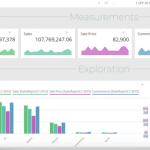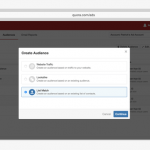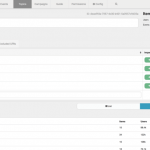Lotame and Cint marry survey panel data with DMP data
The result is verification of inferred DMP data, enriching user profiles for more focused ad targeting and inventory marketing.

When they sign up to take paid online surveys, online panelists give information about themselves which is considered deterministic — that is, it is definite, since it came from the person.
When a data management platform (DMP) creates online user profiles that are used by advertisers to target ads, that data often comes from many sources and is generally considered to be probabilistic. That is, inferences have been made, for example, that the user at this IP address lives in this part of town and is expected to have this income range.
This week, survey panel platform Cint and DMP Lotame announced a strategic partnership that marries these kinds of data. Cint CEO Morten Stand told me that, to his knowledge, this was the first such alliance — although the general intent of survey data verifying third-party data was also behind a pilot Lotame conducted with market research firm Survata in May.
Cint’s survey platform is made available to publishers in its network, of which there are 1,500 worldwide, representing thousands of websites. The Stockholm-based company says its 40 million panelists are the largest such collection around. The panels are sold via a programmatic platform to market researchers.
Let’s say Publisher X invites its site visitors to sign up for survey taking, in which both the site and the panelists are paid. Employing the Cint platform, the surveys are often branded by the site or others. Additionally, Lotame customers can now create panels at participating sites from within its DMP.
Five pieces of info are required for each initial registration: name, email address, ZIP code, gender and year of birth. Other optional questions can also be included at signup.
Survey invitations sent out to registered panelists often require one or more additional pieces of information, such as your annual income or the cars you own.
Under this partnership, Lotame then attempts to match Cint’s profiles of these survey users to its own profiles, using anonymous identifiers. Some matches can be made, such as through the same email address. Then, inferred attributes in the Lotame profile can be verified by the deterministic Cint data.
For instance, User123 in the Cint survey profile data could be matched through an email address to UserABC in Lotame’s files. Because of where she lives and other assumed attributes, Lotame had assumed this user has an annual income of $100K+. But the actual survey question, answered by the user, shows an annual income of $50K, so Lotame’s assumed data is updated.
Lotame’s Cint-enriched profiles can now be used by advertisers with more confidence about their targeting, since at least some of the attributes have been verified by Cint panelists. Those users can be targeted by their cookies or mobile device IDs.
But the data enrichment flow can work the other way as well. Let’s say Tesla wants to market a new car to people who make less than $50K, but the Cint-enriched Lotame profile doesn’t indicate if that user has owned or is interested in electric cars.
So, Tesla’s agency can request more info, and Cint can add that as a specific question the next time that user is invited to take a survey: “Have you ever owned or are you interested in owning an electric car?” If yes for either, Tesla can appropriately target that user.
Lotame Senior Director for Market Innovation Laura Lewellyn noted that websites benefit in ways other than revenue sharing from Cint/Lotame profiles. The site publisher, for instance, can now see that about one-third of survey-takers visiting its Outdoors section are interested in, or already own, an electric car. So, the publisher has a better idea how to market its inventory.
Marketing Land – Internet Marketing News, Strategies & Tips
(50)













